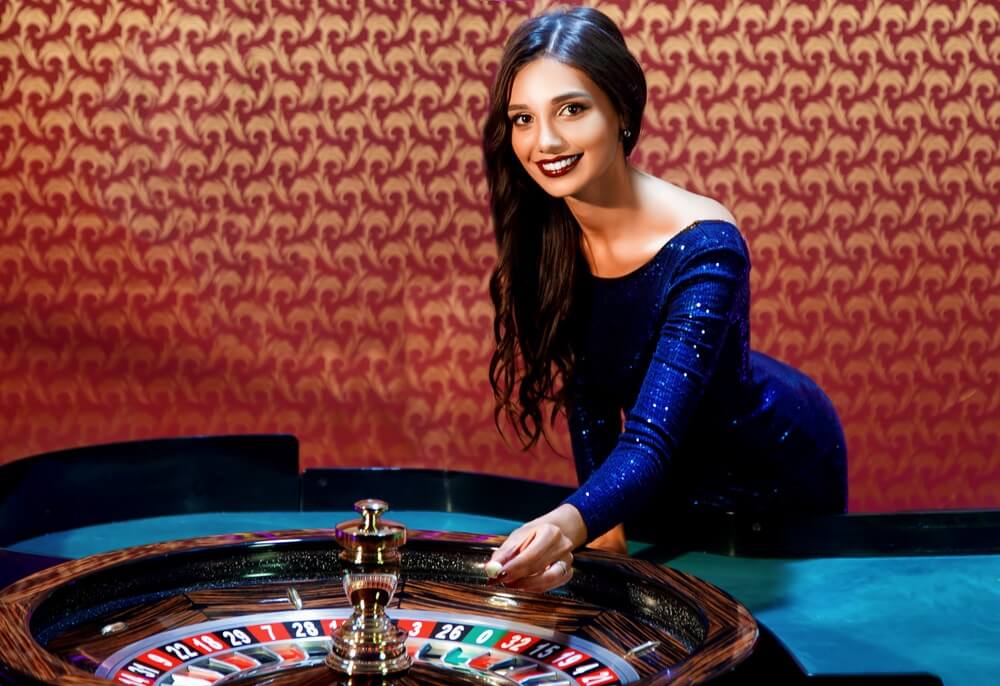Those who have been around in the world of roulette for a while have probably heard of the so-called “dealer's signature”. At first glance, the outcomes of a roulette game seem to be completely random and based on luck, yet there are some factors that can have a small influence on this. One of these factors is based on the human factor in roulette, namely the croupier.
The croupier is of great importance when playing roulette in a casino or online live casino. He or she is the one who, in addition to guiding the game, also puts the ball in the wheel and spins the wheel.
The way the croupier does this is also called the dealers signature. Players who base their game strategy on the dealers signature try to discover patterns in the way the croupier rolls the ball, when the croupier releases the ball, the speed at which the croupier spins the wheel, and so on.
The specific actions of the croupier thus form the starting point of the dealers signature strategy. There has never been any real large-scale scientific research into the presence of the dealers signature and therefore opinions on this subject are rather divided.
The majority of people who have expressed an opinion on the subject do not really believe in a dealers signature, while others believe that the dealers signature could be theoretically plausible, but that practice shows otherwise. Either way, it's an interesting fact that definitely belongs in the list of roulette strategies.
How the dealer signature works in roulette
Obviously, a dealer signature can only exist in roulette in a casino or in an online live casino that uses a real roulette wheel.
In computerized roulette in an online casino, the outcomes are predicted in advance by a random number generator. So there is no human factor in the game, but in roulette in a (live) casino there is.
By closely observing the way the croupier makes the ball roll and the way the wheel spins, in theory it is possible to detect patterns in it and thus predict where the ball will end up. Of course, you can't recognize such a pattern after a few spins.
To discover a dealer's signature, you as a player need to have a tremendous amount of patience, stamina and concentration. In addition, it can also take some time for a croupier to develop a sort of automatism in his work.
After all, being a croupier in roulette is a rather monotonous occupation with little variety. Therefore, over time a croupier's automatism can creep in, something that some players try to take advantage of, but casinos also take measures against.
Recognizing a dealer's signature in roulette
To determine whether a croupier has a particular signature, players should pay attention to several things, including:
- The point at which the croupier releases the ball. Is this always the same point or does this point change?
- Does the croupier release the ball at the same angle, or does the angle change?
- Does the croupier release the ball at the same speed, or does the speed change?
- Does the croupier spin the wheel at the same speed?
- Does the croupier always use the same hand to perform certain actions?
In addition, other factors can have an impact, such as how long the croupier has been doing his job. You don't develop a certain way of throwing the ball in on your first or second day at work; it takes a while for a croupier to develop some sort of routine.
Players who are trying to discover a dealer's signature will be watching the croupier over several gaming sessions and for a longer period of time.
There are also a number of factors that can make it more difficult to detect a dealer signature, such as:
- During the game, the ball is swapped with another ball
- The dealer is alternated with another dealer
- The dealer changes the direction or speed of the wheel
Additional factors that affect the roulette game and any dealer signature
You participate in a game of roulette with C$100 in play credit and start with a basic bet of €1 per round. You then select an even bet, for example betting on red. Unfortunately, the ball lands on black during the first round of play and your balance reaches C$99.
The next step is to double your bet during the next round. Unfortunately the ball lands on black again, causing your total loss to amount to C$3 and your balance toC$97. Then comes the third round of play where you double your bet again. You now place a bet of $4 on red. Yes! The ball lands on red and you win the round. Add the C$4 you won to your balance of C$97, and your total balance is C$101, a total win of C$1.
Next comes another very important principle of the Martingale strategy, which is to start with your original bet after a win, i.e. C$1 if we assume the example above. If you do not start with your original bet, there is no point in using the Martingale strategy.
This is how casinos counteract dealer signature
Casinos obviously do everything they can to ensure that the game of roulette (and other games) is played by the book. Croupiers are therefore closely monitored with, among other things, video cameras, because they can influence the game somewhat. In addition, the equipment is also strictly monitored, as deviations in the equipment can significantly influence the course of the game.
Therefore, the roulette tables are measured and calibrated with great regularity and the balls are replaced every now and then. Casinos also make sure that dealers alternate often enough. Anyone who spends a day playing roulette in a casino will have to deal with several dealers. Whether the dealer signature really exists or not, we'll leave that to one side for the sake of convenience. However, if you can detect something of a routine in a croupier, it may give you a slight advantage. You'll never be able to influence the house edge of the casino, but it can be fun and exciting to see if a particular croupier has a signature.
Such a search can do no harm in roulette, especially when you set clear limits for yourself and always keep in mind that it is and remains a game of chance.



